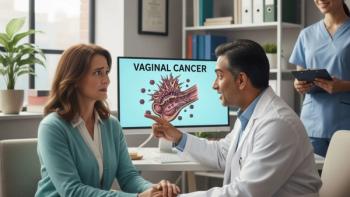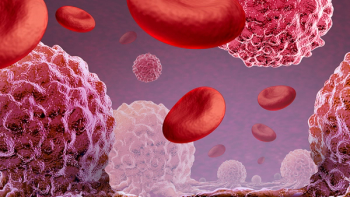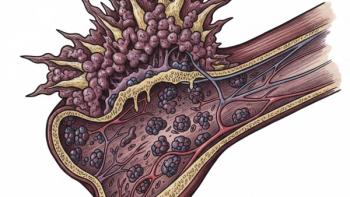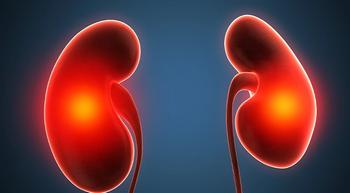
Bladder Cancer Awareness Month Highlights the Importance of Early Detection
Key Takeaways
- Bladder Cancer Awareness Month highlights the importance of early detection and support for patients, emphasizing the disease's prevalence and potential fatality.
- Treatment strategies differ by bladder cancer stage, with options like intravesical therapy, chemotherapy, and immunotherapy being crucial for disease management.
Dr. Daniel P. Petrylak sits down with CURE during Bladder Cancer Awareness Month to discuss key topics for patients with the disease.
The month of May serves as Bladder Cancer Awareness Month and aims to promote both early detection and support for individuals with this disease, according to the Bladder Cancer Awareness Month website, which went on to note that the month is dedicated to increase public awareness for one of the most common cancers in the United States.
Every year, approximately 610,000 people are diagnosed with bladder cancer, and about 1.9 million people are currently living with the condition, the World Bladder Cancer Patient Coalition website. As the 9th most commonly diagnosed cancer and the 13th cause of death from cancer globally, there is currently an unmet need within the treatment landscape.
To further discuss this topic, Dr. Daniel P. Petrylak sat down for an interview with CURE during Bladder Cancer Awareness Month to discuss key topics for patients with the disease.
Petrylak is a professor of Medicine (Medical Oncology) and of Urology, as well as the chief of Genitourinary Oncology at the Yale School of Medicine, located in New Haven, Connecticut.
CURE: Why is Bladder Cancer Awareness Month important, and how does it help patients and families affected by this disease?
Petrylak: Bladder Cancer Awareness Month raises awareness of a disease with a significant incidence rate in the United States and one that can also be fatal. Early detection, as with any other cancer, is critical for a cure. We know that bladder cancer is most prominent in patients with chemical exposure and in smokers. In fact, many patients are often surprised that smoking is a risk factor. The way I explain it is that the same carcinogens filtered by the lungs must exit the body somewhere.
It's important to note that early detection is critical to disease control and cure. We know that if we catch the disease early, potentially in the non-muscle-invasive state — [meaning] the cancer does not invade the muscle — and the reason this is important is that the muscle contains lymphatics and blood vessels, which can carry tumor cells to other parts of the body. In that situation, we view bladder cancer as a systemic disease.
Early detection in the non-muscle-invasive state, as well as treatment in the muscle-invasive state, where we can give chemotherapy and local therapy such as cystectomy or radiation therapy, the important thing is to catch this disease before it becomes metastatic.
Can you explain the different types of bladder cancer and how treatment options may vary based on disease stage and type?
So there is non-muscle-invasive bladder cancer, muscle-invasive bladder cancer and metastatic bladder cancer. In non-muscle-invasive bladder cancer, treatment depends on the tumor's grade and [any] prior treatments. Low-grade tumors can sometimes be controlled by simply scraping the bladder. However, more aggressive histology may require intravesical therapy, such as BCG, which is a standard of care.
For patients who have [progressed on] BCG, newer agents and standard chemotherapy drugs like gemcitabine and docetaxel can be given inside the bladder to control the disease and prevent it from invading the muscle. The muscle layer is key, and it's crucial to ask your physician whether it's involved and if there was sufficient muscle in the scraping to make that determination, because once the cancer reaches the muscle, the approach changes significantly.
The muscle contains blood vessels and lymphatics that can carry the tumor to other parts of the body. In that situation — cancer in the muscle — we consider bladder cancer to be systemic, similar to breast cancer. Standard chemotherapy, which for years was a combination of drugs called MVAC or gemcitabine and cisplatin, is the standard treatment for these patients before bladder removal.
Discussing the appropriateness of these treatments with the surgeon or oncologist is essential before proceeding with a cystectomy. Afterward, for patients with high-risk disease, we are now using adjuvant immunotherapy. Cystectomy is not the only approach for localized bladder cancer; a combination of chemotherapy and radiation therapy is also an option, and there is ongoing debate about whether this is equivalent to a radical cystectomy. That summarizes localized disease.
In metastatic disease, I think the most significant advances have been made in the last 10 to 15 years. The dawn of immunotherapy in this disease began around 2013 with the first trials of checkpoint inhibitors such as Tecentriq (atezolizumab), Keytruda (pembrolizumab), Imfinzi (durvalumab), Bavencio (avelumab) and Opdivo (nivolumab). Five checkpoint inhibitors were approved at one point and three currently remain as standard treatments. As mentioned, Opdivo is given as adjuvant therapy for a year. There is also data for Keytruda, as well.
In patients who have had chemotherapy for metastatic disease (drugs like gemcitabine and platinum). We often give maintenance Imfinzi to patients who have had a response or stable disease.
What's particularly exciting is the emergence of antibody-drug conjugates for these patients. This has been in clinical trials for many years; in fact, I was involved in the phase 1, phase 2, and phase 3 trials of Padcev (enfortumab vedotin-ejfv), which is an antibody-drug conjugate that recognizes a marker on the cancer cell called nectin and delivers chemotherapy directly to the tumor. This acts like a "smart bomb," delivering chemotherapy with the hope of avoiding systemic side effects. The warhead is an anti-tubulin agent that disrupts or destroys the cancer cell's structure.
We have seen responses in patients with extensive disease using Padcev alone after they have failed chemotherapy or immunotherapy. Now, the combination of Padcev plus Keytruda shows a doubling of the complete response rate and a doubling of the median survival in patients with advanced disease. This has been a huge advancement in the field.
What should patients know about the role of molecular testing in determining eligibility for targeted therapies?
It's important for a patient to know that they should always undergo molecular phenotyping. We look for a particular molecular marker called FGFR3, which is expressed in about 10% of urothelial cancer or bladder cancer cells. This marker is important because there is a drug that targets FGFR3 called Balversa (erdafitinib), which has been shown to improve survival over standard chemotherapy in patients who have received prior treatment.
It's an oral drug that has demonstrated effectiveness. All patients should be tested for this marker because you won't know if you have it unless you are tested. Naturally, you want to administer a drug with a good chance of working, rather than giving one without justification, which would only potentially cause toxicity without providing benefit.
How can patients advocate for themselves during diagnosis and treatment, especially when navigating multiple specialists or complex care plans?
Well, you want to go to a center that specializes in bladder cancer. At our institution, my office is actually in the urology department. I'm a medical oncologist, so I frequently discuss different cases with my colleagues. You want to be sure that the surgeon, the radiation oncologist, and the medical oncologist all communicate, because the team approach is the best way to handle this disease.
You should always ask your doctor if there is a clinical trial available that you may potentially enroll in. This is important not only for your care but potentially for the care of other patients in the future, because we will learn things about how a disease responds to a particular drug or treatment.
Never be shy about asking for a second opinion. In fact, if your physician gets irritated that you asked for another opinion, run as fast and as far as you can, because we can all always learn from someone else's expertise and perhaps appreciate subtleties in a case that a doctor too close to it might not see.
Your doctor should be receptive to discussing your case with other people.
What role do lifestyle changes or follow-up care play after bladder cancer treatment, and what should patients monitor long-term?
I think that all depends on the stage of the cancer, the brain tumors themselves and any other conditions the patient may have. So clearly, diet, exercise and stopping smoking are really, really critical. Don't smoke ever. I think that's important. A healthy lifestyle is important for overall well-being as well as improving your cancer care.
What would you like patients to take away from today’s conversation?
The main takeaway is that bladder cancer is a treatable and curable disease. We have newer techniques, medications and ways of treating patients that we didn't have 10 or 15 years ago. There has been a really rapid expansion in the treatment options for this disease. Therefore, you really do need to speak to a sub-specialist who focuses on bladder cancer or cancers of the urinary tract, because they have the expertise to help you.
For more news on cancer updates, research and education, don’t forget to





